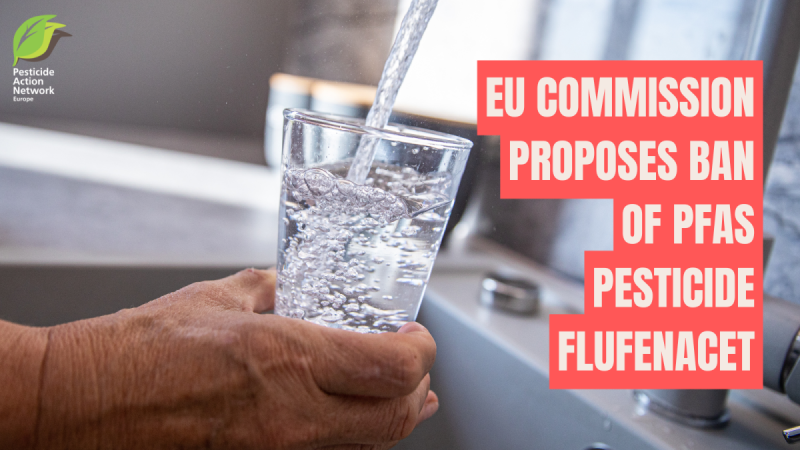PAN Europe Urges Immediate Adoption by Member States
The European Commission is proposing a ban on flufenacet, a widely used PFAS herbicide. This aligns with our call for a swift ban by 49 environmental and health organisations. The proposal will be discussed during the Standing Committee on Plants, Animals, Food and Feed meeting on 4 and 5 December. Member States are urged to adopt this proposal without delay to ensure the ban is effective as soon as possible.
Flufenacet is a top-selling PFAS pesticide produced by Bayer, BASF and other companies. It has been found to pose serious risks to human health and the environment. According to the latest scientific opinion from the EU Food Safety Authority (EFSA), flufenacet acts as an endocrine disruptor and can impact the brain development of babies and children. Moreover, its breakdown product, trifluoroacetic acid (TFA), is non-degradable and has become a major contaminant in Europe’s water systems. An international group of scientists recently concluded that TFA meets the criteria of ‘a planetary boundary threat’ for novel entities. This is due to its extreme persistence, potential toxicity and increasing concentrations. This could create irreversible disruptive impacts on vital earth system processes.
The widespread use of flufenacet on crops such as wheat, barley and rye threatens the health of farmers, consumers and water resources. Sales of Flufenacet have doubled to tripled in many countries over the past ten years.
Earlier this month, PAN Europe and 48 environmental and health organisations called for a swift ban on flufenacet [1]. The Commission proposal [2] represents a first significant step forward. PAN Europe and the other NGOs are now urging Member States to:
- Immediately adopt the non-renewal Regulation presented by the Commission during the meeting on 4 and 5 December.
- Withdraw the national authorisations of all flufenacet-based products from the market.
- Ensure that grace periods are kept to the minimum, for sale, distribution, disposal, storage, or use of existing stocks of flufenacet products to prevent further human health and environmental damage.
Read more:
Notes:
